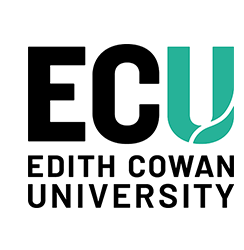Author Identifiers
Noman Md Kislu: https://orcid.org/0000-0001-6281-1464
Islam Syed Mohammed Shamsul: https://orcid.org/0000-0002-3200-2903
Seyed Mohammad Jafar Jalali: https://orcid.org/0000-0002-2169-4350
Jumana Abu-Khalaf: https://orcid.org/0000-0002-6651-2880
Paul Lavery: https://orcid.org/0000-0001-5162-273X
Publication Date
2024
Document Type
Dataset
Publisher
Edith Cowan University
School or Research Centre
School of Science
Funders
This research work is funded by the Australian Government Research Training Program (RTP) scholarship and supported by School of Science, Edith Cowan University, Australia.
Description
The "ECU-MSS-2' dataset contains four different habitats, 'Amphibolis' spp (hereafter 'Amphibolis"), 'Halophila' spp (hereafter 'Halophila'), 'Posidonia' spp (hereafter 'Posidonia') and 'Background'. We compiled this image dataset from different sources. The 'Halophila' images were collected by the Centre for Marine Ecosystems Research, Edith Cowan University, Western Australia.
The 'Amphibolis' 'Background' and 'Posidonia' images were collected by the Department of Biodiversity, Conservation and Attractions (DBCA), Australia. The 'Amphibolis' class includes the seagrass species Amphibolis griffithii and Amphibolis Antarctica. The 'Halophila' class includes Halophila ovalis, while the 'Posidonia' class includes Posidonia sinuosa, Posidonia coriacea, and Posidonia Australis. The 'Background' class includes coral, sand, sponge, seaweeds, fish and other benthic debris.
The dataset contained total 5,201 images, where the 'Amphibolis' class has 1304 images, the 'Background' class has 1237 images, the 'Halophila' class has 1315 images and the 'Posidonia' class has 1345 images. The total images were divided into training and test sets. The training set has 4,161 images and the test set has 1,040 images. All four classes have the same 260 images in the test set.
Research Activity Title
BAOS-CNN: A novel deep neuroevolution algorithm for multispecies seagrass detection
Research Activity Description
We developed a novel Deep Neuroevolutionary (DNE) model that can automate the architectural engineering and hyperparameter tuning of CNNs models by developing and using a novel metaheuristic algorithm, named 'Boosted Atomic Orbital Search (BAOS)'. This proposed BAOS-CNN model achieves the highest overall accuracy (97.48%) among the seven evolutionary-based CNN models. The proposed model was tested and evaluated on this multi-species seagrass dataset.
Methodology
Centre for Marine Ecosystems Research, Edith Cowan University, Western Australia collected the Halophila images. They captured the images by a Fujifilm X-T30 mirror-less digital camera with wXF 18-55mm F 2.8-4 R LM OIS, all under natural light condition. DBCA collected the Amphibolis, Posidonia and background images. These images were captured by a downward-facing camera held 1-metre above the seagrass canopy with a field of view of 75 x 60 cm along transects used for measuring seagrass density/height. Ten downward-facing images were collected from each of the three transects per sites (30 images per site in total).
Start of data collection time period
2020
End of data collection time period
2022
File Size
Total of files 12.9GB
Creative Commons License

This work is licensed under a Creative Commons Attribution 4.0 License.
Citation
Noman, M. K., Islam, S. M., Jalali, S. M., Abu-Khalaf, J., & Lavery, P. (2024). ECU-MSS-2 dataset, a new multi-species seagrass dataset. [Data set]. Edith Cowan University. https://doi.org/10.25958/q8s6-5p21
ECU-MSS-2 Amphibolis_testing.zip (654999 kB)
ECU-MSS-2 Background_testing.zip (396310 kB)
ECU-MSS-2 Halophila_testing.zip (202734 kB)
ECU-MSS-2 Posidonia_testing.zip (590340 kB)
ECU-MSS-2 Amphibolis_training.zip (3367366 kB)
ECU-MSS-2 Background_training.zip (2199355 kB)
ECU-MSS-2 Halophila_training.zip (3402863 kB)
ECU-MSS-2 Posidonia_training.zip (2594118 kB)

